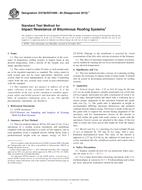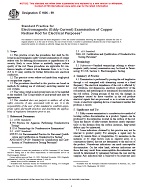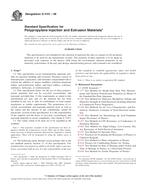1.1 This test method covers pressuremeter testing of soils. A pressuremeter test is an in situ stress-strain test performed on the wall of a borehole using a cylindrical probe that is expanded radially. To obtain viable test results, disturbance to the borehole wall must be minimized.
1.2 This test method includes the procedure for drilling the borehole, inserting the probe, and conducting pressuremeter tests in both granular and cohesive soils, but does not include high pressure testing in rock. Knowledge of the type of soil in which each pressuremeter test is to be made is necessary for assessment of (1) the method of boring or probe placement, or both, (2) the interpretation of the test data, and (3) the reasonableness of the test results.
1.3 This test method does not cover the self-boring pressuremeter, for which the hole is drilled by a mechanical or jetting tool inside the hollow core of the probe. This test method is limited to the pressuremeter which is inserted into predrilled boreholes or, under certain circumstances, is inserted by driving.
1.4 Two alternate testing procedures are provided as follows:
1.4.1 Procedure A – The Equal Pressure Increment Method.
1.4.2 Procedure B – The Equal Volume Increment Method.
Note 1 – A standard for the self-boring pressuremeter is scheduled to be developed separately. Pressuremeter testing in rock may be standardized as an adjunct to this test method.
Note 2 – Strain-controlled tests also can be performed, whereby the probe volume is increased at a constant rate and corresponding pressures are measured. This method shall be applied only if special requirements must be met and is not covered by this test method. Strain-controlled tests may yield different results than the procedure described in this test method.
1.5 All observed and calculated values shall conform to the guidelines for significant digits and rounding established in Practice D 6026.
1.6 The method used to specify how data are collected, calculated, or recorded in this standard is not directly related to the accuracy to which the data can be applied in design or other uses, or both. How one applies the results obtained using this standard is beyond its scope.
1.7 The values stated in SI units are to be regarded as the standard.
1.8 This standard does not purport to address all of the safety concerns, if any, associated with its use. It is the responsibility of the user of this standard to establish appropriate safety and health practices and determine the applicability of regulatory limitations prior to use. See Note 7.
Product Details
- Published:
- 02/15/2007
- Number of Pages:
- 9
- File Size:
- 1 file , 230 KB
- Redline File Size:
- 2 files , 370 KB


